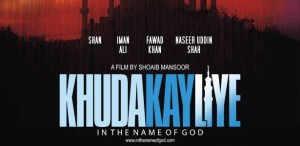Turkish auteur Nuri Bilge Ceylan’s last movie Bir Zamanlar Anadolu’da (Once Upon a Time in Anatolia) is a story of a murder and the officers’ efforts to find the place where the victim was buried. The story was based on the 12 hours of the event happened in Keskin, a small town of Kirikkale, in Central Anatolia Region of Turkey.
BY ALAADDIN F. PAKSOY | APRIL 20, 2012

The co-authors of the script were partly inspired by a true story. In an interview conducted with the director, Ceylan said that one of the co-writers had worked as a doctor in the town where the movie took place. So, the story benefited a lot from the doctor’s memoirs concerning the murder while some conversations was built on quotes from Anton Chekhov (Proimakis, 2011).
The Turkish-Bosnian production takes 150 minutes and it can be categorised as a thriller. Unlike Ceylan’s general tendency in casting, Turkish celebrities Yılmaz Erdoğan and Taner Birsel play two of the leading roles in the movie. Erdoğan’s skill contributes a lot to the movie as it can be argued that nobody could have acted the local commissar of this movie as good as him. Similarly, Taner Birsel gives a perfect performance as usual. Murderer, Fırat Köksal, might be seen as the most arguable character. He confessed that he was the murderer but he played the innocent in the whole story. That is why while watching the movie, you feel a meaningless sympathy for him. Ercan Kesal played a mayor candidate in Ceylan’s previous movie Three Monkeys. This time, Kesal plays the Mukhtar of the village and his speech to the officers can beam you up to the heart of Anatolian villages. Including the Mukhtar’s, several conversations of the movie reveal the hypocrisy and selfishness of Anatolian men. The characters, especially the prosecutor and the commissar do not care about others’ problems as they are only focused on their simple personal life.
It can be argued that this is a very realist movie in terms of its characters, script, conversations, and covering a relatively short period of time for a movie. The only surrealist example might be the scene when the murderer sees the victim in front of the window in Mukhtar’s house. Concerning this scene, Ceylan’s comments contribute to the movie’s realist character. He said that it was the murderer’s dream and dreams were part of real life (Proimakis, 2011). Yet the movie’s realist spirit does not demolish its visual aesthetic. Although Ceylan’s visual materials are remarkably restricted in the steppe landscape and darkness of the night, he successfully employs the rolling apples, flying leaves, and the light coming from cars and the train in his visual representation of the story. It can even be argued that every single frame of this movie can be a picture on your wall if you cannot afford to pay for a Caravaggio or Rembrandt painting. In particular, the establishing shot in front of the auto-tyre repair shop resembles a painting. This is Ceylan’s creativity of transforming ordinary places into aesthetic frames.
 To Read the rest of the article Please Click Here for Free Download.
To Read the rest of the article Please Click Here for Free Download.
Published in Political Reflection Magazine (PR) Vol. 3 No. 2


